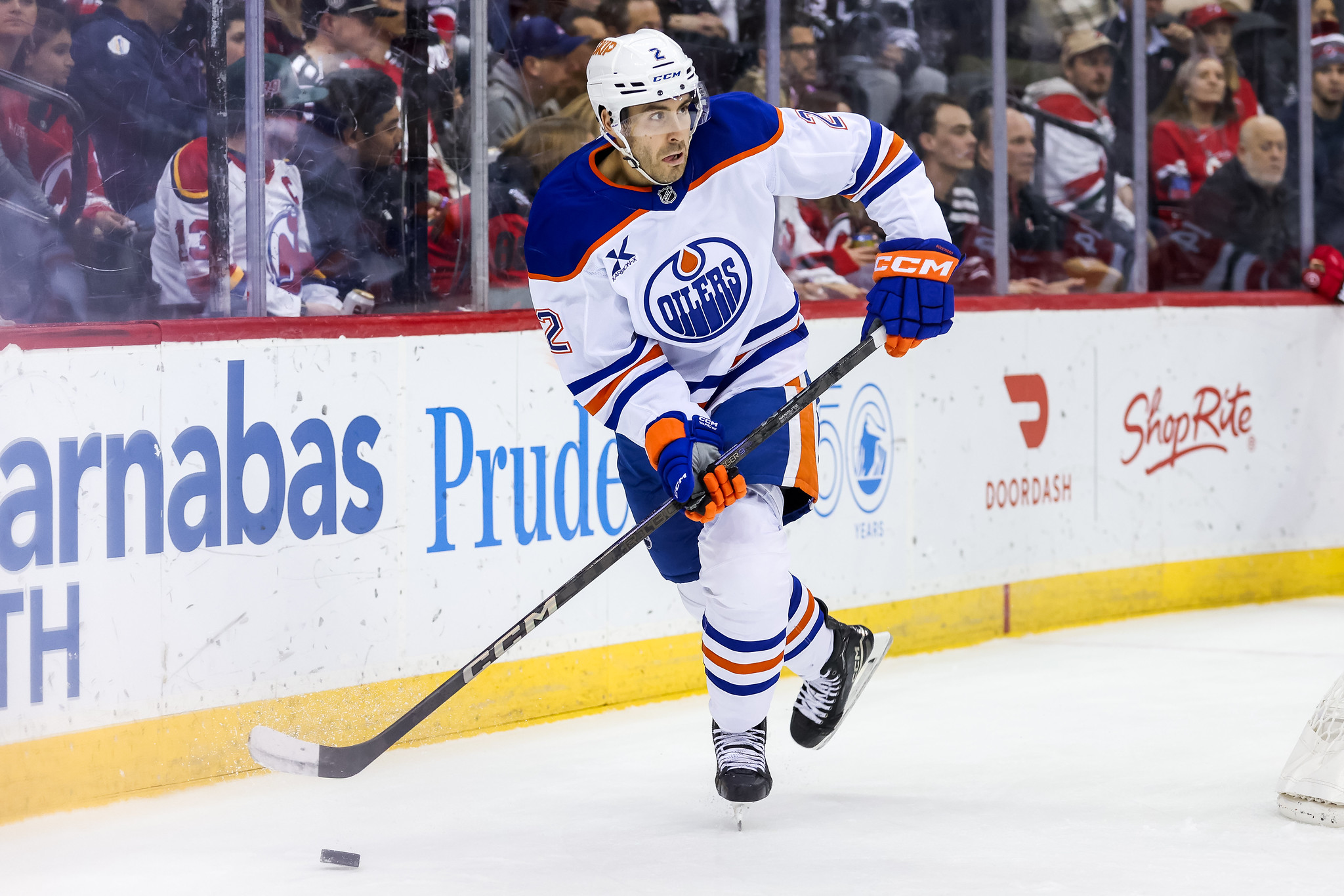

The Edmonton Oilers are heading into a crucial offseason where the re-signing of star defenseman Evan Bouchard will significantly impact the team's future salary cap situation and potentially force some difficult decisions regarding other players.
Bouchard's performance, particularly his offensive contributions and playoff success, have made him a top priority for the Oilers. He has consistently ranked among the highest-scoring defensemen in the league over the past two years. Frank Seravalli of Daily Faceoff estimates that Bouchard's next contract will likely exceed $10 million annually. Similarly, Evolving-Hockey projects an eight-year deal with an average annual value (AAV) of around $10.61 million. These projections reflect Bouchard's growing importance to the Oilers' blue line and overall team success.
Currently, the Oilers are projected to have approximately $11.9 million in cap space for the 2025-26 season. If Bouchard's new contract lands within the projected $10-11 million range, the Oilers will be left with minimal financial flexibility to address other roster needs. This situation could lead to the departure of several pending free agents or require the team to explore trade options to create additional cap space.
Several factors contribute to the Oilers' cap constraints. The team already has substantial long-term commitments to key players like Connor McDavid, Leon Draisaitl, and Darnell Nurse. Draisaitl's $14 million AAV, which began on July 1st, 2025, further tightens the Oilers' financial situation. McDavid is also eligible for a contract extension, and his next deal is expected to surpass Draisaitl's in terms of AAV, potentially making him the highest-paid player in the league. Securing McDavid long-term is paramount for the Oilers, but it will undoubtedly add to the cap pressure.
The NHL salary cap is projected to increase to $95.5 million for the 2025-26 season, a $7.5 million increase from the current $88 million. Further increases are expected in the following seasons, reaching $104 million in 2026-27 and $113.5 million in 2027-28. While these increases will provide some relief, the Oilers will still need to make strategic decisions to manage their cap effectively.
Potential cap casualties for the Oilers could include pending unrestricted free agents (UFAs) such as Lane Pederson, Collin Delia, and Connor Carrick. Additionally, the team might consider trading players with existing contracts to free up cap space.
The Oilers' management will need to carefully weigh the value of each player against the team's overall cap situation. Prioritizing long-term assets and making shrewd decisions regarding player acquisitions and departures will be crucial for maintaining a competitive roster while navigating the challenges of the salary cap. The need to potentially shed salary was foreshadowed when St. Louis successfully offer-sheeted Dylan Holloway and Philip Broberg in the past.
Ultimately, the Oilers' ability to remain a Stanley Cup contender will depend on their ability to manage the salary cap effectively while retaining their core players and supplementing the roster with affordable and productive talent.